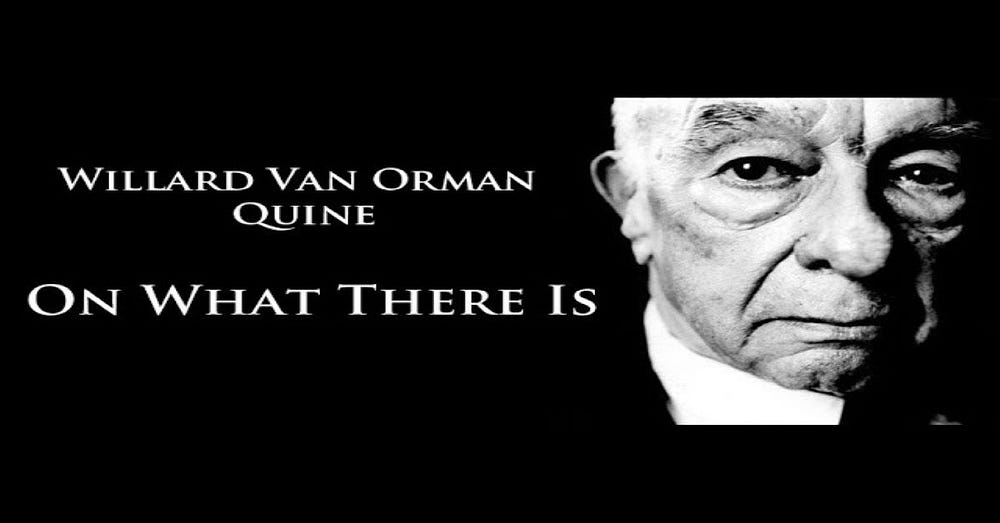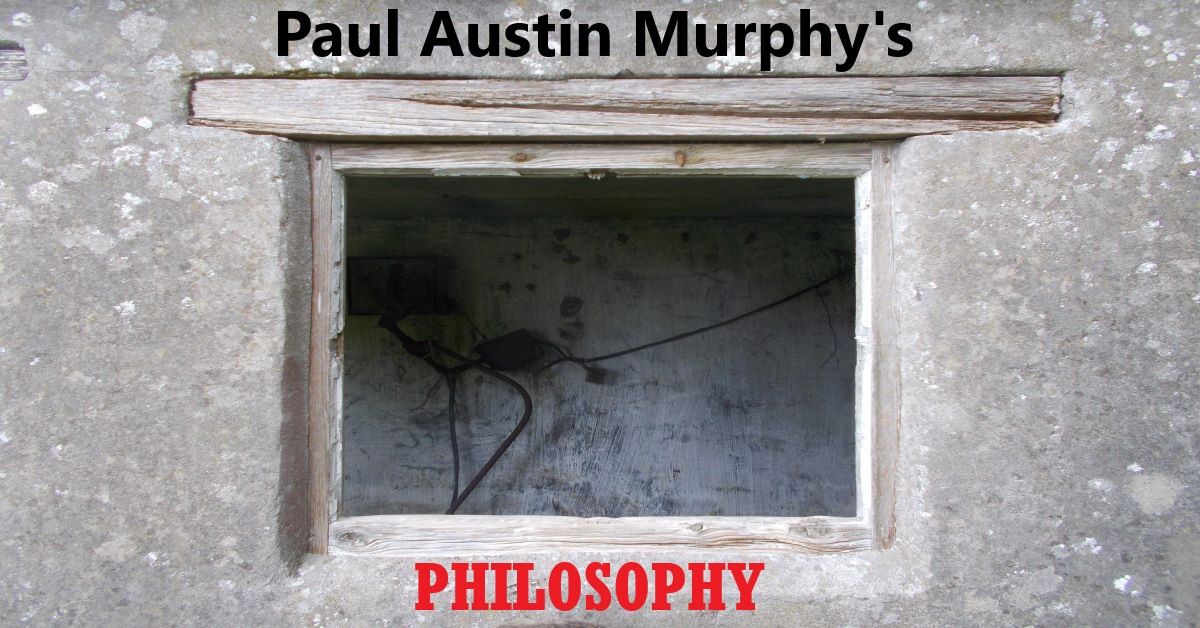
What is Existence?
The American philosopher W.V.O. Quine (1908–2000) discussed what he called the “old Platonic riddle of non-being” (or Plato’s beard) in his paper ‘On What There Is’ (1948).
The position is that if we talk about something, then it must exist or have some kind of being. Indeed even if we talk about something that doesn’t exist, then it must still (in some way) have being — otherwise “what is it that there is not?”.
Of course it depends here on what’s meant by the word “exist”. Traditionally, there have been different (as it were) modes of existence. So the problem is more difficult than it initially looks. However, even if we accept an entirely mental or a non-spatiotemporal existence, then what kind of being or existence would a round square have? Even that… thing, according to Alexius Meinong (1853 — 1920) at least , has some kind of existence or being.
Quine doesn’t tackle the issue of modes of existence in his paper: he does tackle the issue of meaning and reference.
Meaning and Reference
Quine takes the case of the mythical winged horse Pegasus.
McX (Quine’s fictional adversary) argued that if
“Pegasus were not [] we should not be talking about anything when we use the word”.
Indeed McX argued that it would even be “nonsense to say that Pegasus is not”. This is also why some philosophers believed that the locution “God does not exist” is as meaningless as “God exists”. In this case, McX would argue:
Who is this God who doesn’t exist?
This was the problem which Bertrand Russell attempted to solve in his paper ‘Existence and Description’. The issue can be called the Problem of Empty Reference (see ‘empty name’).
Quine himself refers to Russell’s well-known take on the problem; and he largely endorses it.
Russell himself attempted to solve this problem by getting rid of proper names and definite descriptions. Thus the statement
(1) “The author of Waverley was a poet.”
became
(2) “Someone (better: something) wrote Waverley and was a poet, and nothing else wrote Waverley.”
Thus (2) is the (supposed) logical form (as it were) beneath the surface (or everyday grammar) of (1). So we can ask here if (2) is a translation, a version or simply an alternative of or to (1). It seems that (2) is an alternative rather than a logically precise version or translation of (1). That is, (1) may well be philosophically problematic as it stands. However, that doesn’t make (2) a translation or even a version of it.
Moreover, when someone utters (1), he doesn’t (as it’s often put) “really mean” (2). He may well be making philosophical mistakes when he utters (1). However, that doesn’t make (2) a version or translation of (1).
For example, the words “nothing else wrote Waverley” would probably be further from the mind of the utterer of (1) as anything could be. Thus (2), in that case, is more of a logical or philosophical (as it were) imposition than a version or translation.
Quine goes into a little detail as to why Russell substituted (2) for (1).
As stated, it was primarily an attempt to get rid of proper names. What we have in (2) is a substitution of “variables of quantification” for the original names. The quantifiers in (2) are “something” and “nothing”. So these quantifiers aren’t names. They don’t work like names. instead, what they do is “refer to entities generally”.
How did this help both Russell and Quine?
This is how the argument goes.
If you don’t name a specific thing, then you’re not ontologically committed to that thing’s existence. “The author of Waverley” is a definite description of a specific individual. The quantifier “something”, on the other hand, isn’t naming a specific individual and therefore it’s not existentially or ontologically committed. In other words, in (2) the speaker is talking about some thing, not about a specific individual — named either by a definite description or by a proper name.
The problem is more pronounced when someone makes an utterance about someone’s or something’s non-existence (as in the God example).
Again, to what or to whom is the speaker referring if that person or thing doesn’t exist?
So we have an original locution and a (?) again:
(1) “The author of Waverley is not.”
becomes
(2) “Either each thing failed to write or two or more things wrote Waverley.”
In (2) above the quantifier is more convoluted in expression. Instead of the quantifier “everything”, we now have “each thing” (a version of the universal quantifier). Here the speaker doesn’t talk about a specific entity (i.e. the author of Waverley). He talks about “each thing” or about “two or more things”. As Quine put it, the second version “contains no expression purporting to name the author of Waverley”.
Later in the paper Quine recapitulated on these issues.
Again, Quine stressed the need to erase names. So what do we use to refer to entities? We use variables. More precisely and as Quine puts it: “[T]o be assumed as an entity is [] to be reckoned as the value of a variable.” And the point of variables is that they are non-specific. That is, they don’t name particulars. As Quine pointed out, variables are therefore like pronouns (e.g., “it”, “this”, “that”, “those”, “who”, “which”, etc.).
So what’s the point of these logical substitutions to the originals?
The point is to stop us naming non-existents and thus allow an escape from Plato’s beard.
[The reasons for this approach can’t be gone into here. I suggest that the reader consult Russell’s original paper.]
Quine follows his account of Russell’s position with an account of Gottlob Frege’s notion of sense and reference.
Sense & Reference
What is the meaning of a proper name?
In Quine’s and Frege’s examples, what are the meanings of the names “Morning Star” and “Evening Star”?
The reference of those names (i.e., the star itself) can’t be the meaning of the two proper names because they both refer to the same thing: viz., the planet Venus.
This distinction between meaning and reference had already been well made before Quine. However, Quine used it to get back to the Pegasus problem he tackled earlier in his paper.
The reason why McX made his mistake about believing that names must refer is that he
“confused the alleged named object Pegasus with the meaning of the word ‘Pegasus’”.
Thus McX didn’t distinguish reference from meaning (as also in the Venus example). McX believed that the meaning of the name ‘Pegasus’ must be the thing Pegasus. But, as Frege showed, if the reference were identical with the meaning, then the planet Venus wouldn’t have two different names.
It follows that we can now talk about all sorts of non-existents without committing ourselves to their existence. If reference isn’t identical with meaning (or Fregean “sense”), then a name can have meaning without it also having a specific reference — at least a spatiotemporal reference. And that’s what Pegasus is meant to be: a spatiotemporal winged horse; not an idea in one mind (or in many minds) or an abstract object.
Quine separates meaning and reference. However, what had he to say about meanings themselves?
This is where Quine was much more original and less Fregean.
Meanings
Quine’s position on meaning (or meanings) is quite radical — or at least it was in 1948.
To put it plainly: Quine rejects meanings — at least as traditionally characterised. However, in order to stop people getting too outraged, he almost immediately stated: “[I do not] thereby deny that words and statements are meaningful.” At a prima facie level, Quine’s statement appears to contradict his position. However, Quine went on to clarify his position on meaning/s.
As just shown, Quine agreed that certain locutions are either meaningful or meaningless. However, this isn’t because these locutions express pre-existing entities that we call “meanings”. Meanings aren’t abstract entities in the (Platonic or Fregean) Third Realm, mental entities in the mind, and they aren’t mental images.
So what’s left for meanings to be?
Quine clarifies his position in the following manner.
Quine accepts that two locutions can have the same meaning. However, they don’t do so because both locutions match a pre-existing abstract meaning or “mental idea” that’s somehow expressed by the two locutions.
So why did Quine believe that they have the same meaning?
To Quine, it’s simply a case of language referring to language, rather than language referring to abstract entities, mental ideas or even denotata. That is, both locutions have the same meaning if they can be expressed by a third version that expresses (more or less) the same thing (usually “in a clearer language than the original”).
Thus “the meaning of” sentence S is given by another sentence, rather than by S matching up to an abstract entity or mental idea we call a “meaning”. If the meaning of S were an abstract entity, then how could a locution match it at all? How can a contingent verbal locution possibly match something that’s a timeless non-linguistic… thing? How do you match such completely unlike things?
Quine called these different linguistic versions of the same sentence “synonyms”. So just as single words can have their synonyms, so too can whole sentences and perhaps even collections of sentences.
Towards the end of the paper ‘On What There Is’ Quine gets away from ontology and enters the realm of epistemology.
The Epistemology of What There Is
How do we describe and know what there is?
Quine’s principle answer is: via conceptual schemes.
Of course there are alternative conceptual schemes. However, according to Quine, they aren’t all mutually exclusive. That is, there isn’t only one way of describing or knowing the world correctly (as metaphysical realists may well believe).
The two conceptual schemes Quine discussed were that of the physicalist and that of the phenomenalist.
Simplistically speaking, the physicalist offers us a world of objects (such as a penny). The phenomenalist, on the other hand, offers us a world of (amongst other things) a round sensum rather than the object we call a “penny”. According to Quine (qua pragmatist), both conceptual schemes have their advantages.
Quine was very easy-going about conceptual schemes… but only up to a point! The phenomenalist offers us a world of “scattered sense events” rather than one of objects qua objects. Thus when we see a penny as a penny (i.e., rather than as a round sensum), we’re effectively “simplifying our over-all reports”. That is, we assign “sense data to objects” to simplify things.
Despite the fact that it was stated earlier that Quine didn’t see these particular conceptual schemes as being mutually exclusive, Quine did believe that they’re — at least in a weak sense — in competition with one another. However, although they’re in competition, both still have their advantages. As Quine put it, each “deserves to be developed”. So it mainly depends on what we want from our conceptual schemes. In fact Quine describes the phenomenalist’s conceptual scheme as an epistemological enterprise. The physicalist’s conceptual scheme, on the other hand, is physical.
Reference
W.V. Quine, ‘On What There Is’, from the Review of Metaphysics (1948)









No comments:
Post a Comment